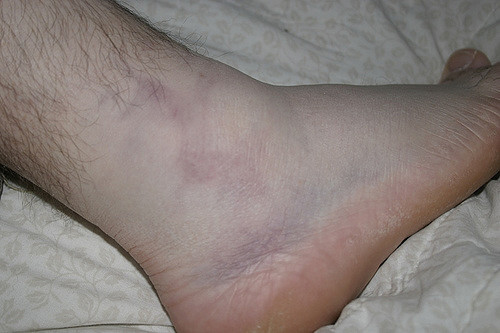Ankle Sprain Recovery
The time period for an ankle sprain recovery greatly varies from case to case. What happens in the initial three hours after the injury occurs, greatly impacts the course of treatment; adherence to the orders of a physician in the aftermath determines the ankle sprain recovery time.
Sure, this recovery period is also determined in great part by the overall health and age of the patient, but if the person fails to completely follow all of the rules and regulations set forth by a trained medical professional, there is a good chance that a complete recovery may takes months instead of weeks.
Moreover, the ankle sprain recovery may be seriously hampered by a potential for reinjuring the very same ligament that became overly stretched or torn. This is the case when the sprain is not properly iced, supported, and elevated. In some cases there is also the chance that too much weight is being put on the leg too soon after the injury occurred. The use of pain killers is unfortunately largely to blame for this happening. The pain associated with an ankle sprain recovery alerts the patient if she or he chooses to overly strain the limb.
With the use of pain killers, this pain is masked and the patient may be unaware that the strain on the affected limb is too great for comfort. Without the bodily warning to take it easy and allow for a complete ankle sprain recovery, there is the potential for adding a secondary injury to the first one. Yet even in cases where the patient works hard on avoiding the strain on the ankle, there is still the chance of undergoing another injury.
This happens when the ankle sprain recovery period tempts the patient to change the way she or he uses the limb. This might mean an uneven distribution of weight, just to avoid crutches or a wheelchair. The ligaments most at risk during this time are those associated with the knee joint. If the ankle sprain recovery period does indeed translate into a secondary injury to the knee of the same limb, there is a good chance that this will lead to a reinjuring of the ankle joint as soon as the knee joint is in treatment. Physicians may seriously consider complete immobilization of the leg or even surgery to provide a complete healing of both ligaments at the same time.
Symptoms of a sprain typically include swelling, bruising, pain and limited mobility. If the patient is wearing an ankle bracelet or any other jewelry, it is best to remove them before swelling occurs. This is true if the sprain occurs somewhere else in the body. For example, if the sprain occurs in the finger or hand, it is best to remove any silver, gold or tungsten wedding bands before swelling occurs.

